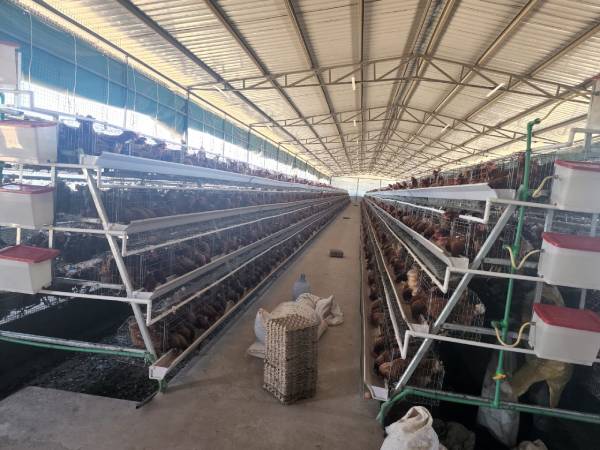In modern poultry farming, battery cages are one of the most efficient systems for egg production and flock management. Among the most popular designs are the A-Type battery cage and the H-Type battery cage. Each system has unique features that can impact egg yield, labor requirements, animal welfare, and operating costs. This guide provides a detailed comparison to help farmers choose the best cage system for their needs.
1. What is an A-Type Battery Cage?

-
Structure: The A-Type cage is arranged in a triangular or “A-frame” layout, usually stacked in 3–4 tiers.
-
Advantages:
-
Better natural ventilation and light distribution.
-
Lower initial investment cost.
-
Easier manual observation and intervention.
-
-
Drawbacks:
-
Requires more floor space.
-
Lower stocking density compared to H-Type cages.
-
2. What is an H-Type Battery Cage?

-
Structure: The H-Type cage features a double-sided vertical design, forming an “H” shape with a central aisle. Can be stacked up to 8 tiers.
-
Advantages:
-
High stocking density—ideal for large-scale poultry farms.
-
Compatible with fully automated feeding, egg collection, and manure removal systems.
-
Saves floor space and maximizes production per square meter.
-
-
Drawbacks:
-
Higher upfront investment.
-
Requires advanced climate control and technical maintenance.
-
3. Stocking Density and Space Efficiency
-
A-Type: Medium density; provides slightly more space per bird, reducing stress and pecking issues.
-
H-Type: High density; maximizes production but demands excellent ventilation to maintain bird health.
4. Automation and Labor Savings
-
A-Type: Can integrate semi-automatic systems like egg belts and manure scrapers, but still requires more manual labor.
-
H-Type: Often fully automated—reduces labor costs significantly, but depends on skilled maintenance.

5. Feeding and Water Systems
-
A-Type: Uses simple feed troughs and nipple drinkers; lower risk of technical breakdowns.
-
H-Type: Fully automated feed and water delivery; minimizes waste but has higher system complexity.
6. Manure Management
-
A-Type: Manure is removed via belts or scrapers—low-cost setup, flexible cleaning schedule.
-
H-Type: Manure drops into deep pits or onto belts; suitable for large farms, but initial construction is more expensive.
7. Cost and Investment Considerations
| Factor | A-Type Battery Cage | H-Type Battery Cage |
|---|---|---|
| Initial Cost | Low | High |
| Land Requirement | More space | Less space |
| Automation Level | Medium | High |
| Labor Requirement | Higher | Lower |
| Best For | Small & medium farms | Large-scale operations |
8. Which Battery Cage is Best for Your Poultry Farm?
-
Choose A-Type if:
-
You have limited capital.
-
Your farm has ample floor space.
-
You want simpler equipment with lower maintenance requirements.
-
-
Choose H-Type if:
-
You aim for high-density, large-scale egg production.
-
You have advanced climate control systems.
-
You want to minimize daily labor needs.
-
Conclusion: Matching Cage Type to Farm Goals
Both A-Type and H-Type battery cages have proven benefits in poultry farming. The ideal choice depends on your farm’s scale, budget, management capacity, and production goals. By understanding each system’s strengths and weaknesses, you can invest in equipment that maximizes productivity while maintaining bird health and operational efficiency.
